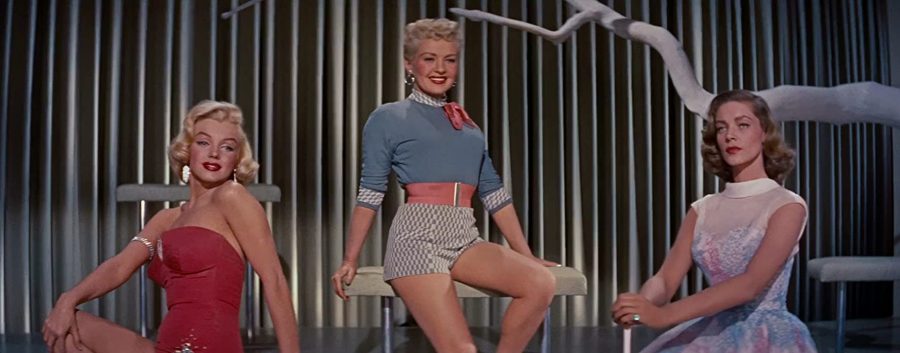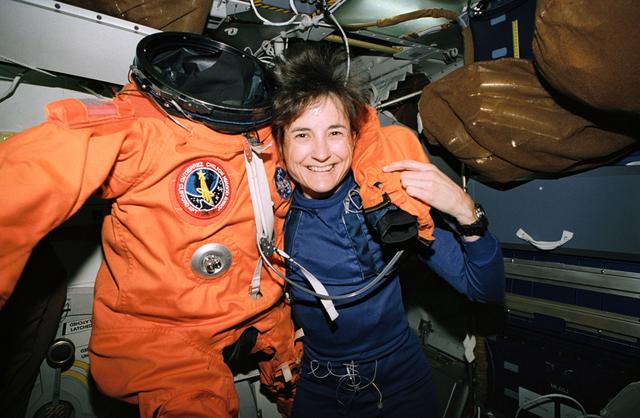American cinema has, since its birth, the power of governing society’s mores. With such potential, the film industry is susceptible to the same flaws that ravage a country, as movies feed off of public opinion. The female persona comes under attack, wrongfully represented and grossly sidelined. Yet, there have been women, pioneers in the evolution of the female identity, who have struggled against the culture-defining tide of the film industry.
The objectification of the female role became a well-marketed norm.
Florence Lawrence, first-named movie star
Florence Lawrence jump-started a new era of film with her work in Daniel Boone (1907) as the frontiersman’s daughter. In the formative years of cinema, studios did not credit any actor, director or screenwriter in fear that, with increasing popularity, the crew would demand higher wages. However, after a publicity stunt falsely reported her death, the studio magnified her comeback by announcing her name. Lawrence thus became the first-named female movie star ever1. Her fame, though, grew from her recurring presence, rather than performance, as the conservative trends drove the public to see no more than a pretty face.
Janet Gaynor, first Academy Award winner for Best Actress
Arguably, the earliest 20th-century leading lady actually known for her acting was Janet Gaynor. Winning the first Academy Award for Best Actress for Street Angel (1928), Gaynor2 played a free-spirited character, who worked as a prostitute and later joined a traveling circus. This “carefree” nature became a cinematic stereotype. Her award illustrated a new conception of the female character: women should be portrayed as one-dimensional. These characters are defined by only one main feature, often the blithe personality that Gaynor donned. Her elusiveness, defining her depth-lacking character there simply for others’ development, is what garnered her accolades. However, she was continuously typecast due to this success, seen in movies such as State Fair (1933) and The Farmer Takes a Wife (1935). She eventually broke away from 20th Century-Fox and acted for Selznick International Pictures, producer of Gone With The Wind (1939), in the original A Star is Born (1937). Despite her ultimate refusal to comply with the industry standards for women to stick to being simply a love interest, Gaynor’s career exemplifies the effect of society’s perspective on film. Actresses became objectified by the public’s demand, as that is how the American people viewed women.[penci_container container_layout=”13_23″][penci_column width=”1/3″ order=”1″][/penci_column][penci_column width=”2/3″ order=”2″][vc_video link=”https://www.youtube.com/watch?v=UsAhVTShKbA”][/penci_column][/penci_container]People enjoyed watching the cinematic depiction of women. It was simple, and the aloof nature of the characters fed the audience’s own want to escape their daily life. Women were art, conceived by the director in a way that would best suit publicity. In the early to mid 1900s, movies contained the female character to have a flat, undeveloped personality.Marilyn Monroe, a poster girl for a culture of objectification, is known for being a sex symbol. With movies such as Gentlemen Prefer Blondes (1953), Monroe proved to be a capable actress, but her limited role left her being defined by a “blonde bombshell” personality. Audrey Hepburn too played the same one-dimensional roles, a whimsical beauty who will take the audience away from reality. These roles only furthered the female stereotype of being an object for the sake of the plot, rather than a person with depth of thought. These characters were implemented solely for the development of others in the story. Movies represent our values, and, at the time, women were still not popularly regarded as highly independent and intellectual members of society. [vc_video link=”https://www.youtube.com/watch?v=Mu3GS08JkW0″][vc_empty_space][penci_container container_layout=”14_12_14″][penci_column width=”1/4″ order=”1″][/penci_column][penci_column width=”1/2″ order=”2″] [/penci_column][penci_column width=”1/4″ order=”3″][/penci_column][/penci_container]
The female personification evolves
According to USA Today in 2016, “the average American will watch over 5,000 movies in their lifetime”. Cinema is a culture-defining industry, which, due to its extensive reach, has the ability to create change in society.
Ida Lupino was a widely known actress, characterized by “hard-luck dames” she played, of the 30s and early 40s. However, due to a shortage of good roles, she decided to go behind the camera. Lupino’s work as a director provided an avenue of cinematic revolution for women empowerment. It was the first time that a film addressed problems for females in everyday society instead of creating the unrealistic, shallow representation of women. Outrage (1950) was one of the first movies to touch the subject of rape, and the main actress, instead of acting as a vessel for the male gaze, confronted real, pressing societal dilemmas. The movie evoked empathy from the audience, witnessing the ostracization of the main character of the movie. Lupino utilized this compassion, channeling it to stress the horror, isolation and apathy at the time for rape victims. She carefully shapes the female lead of the movie to make her own choices after the encounter, such as reporting the crime.As rape survivors in the 50s, and frankly today, felt incapable of doing so, this moment in the movie was ground-breaking in itself. This movie directly addressed the issue and blatantly scrutinized the stigma on the issue of rape in the status quo, highlighting the internalized trauma. Lupino’s work catalyzed the movie industry to grow more aware of its impact and cultural duty. [penci_container container_layout=”23_13″][penci_column width=”2/3″ order=”1″]
Sigourney Weaver, first female lead in a Sci-Fi movie
As cinema evolved, women began to take more and more lead roles. Sigourney Weaver’s main character in Alien (1979) changed the definition of science fiction, as a woman was played a role conventionally set aside for a tough male persona. Alien was, thus, monumental, with its casting decisions. Emanuel Levy, a former film professor at Columbia University, expands on this. “The decision to make the lead character a female was ‘revolutionary,’ wishing to deviate from the norm of the otherwise male-driven sci-fi.” Weaver’s character paved the way for women to take the lead, regardless of the role’s traditional portrayal. Female personification evolved in genres across the board, including the classic romantic dramas.[/penci_column][penci_column width=”1/3″ order=”2″][/penci_column][/penci_container][vc_video link=”https://www.youtube.com/watch?v=VjdgqT_xtEo&t=15s”]Rambling Rose (1991), with Laura Dern as the love interest, is a prime example of such cinematic evolution. The movie embraced the difficult task of depicting all the nuances of a female personality, particularly portraying a charater with sex appeal as something more than just one-dimensional. Although Dern played the classic innocent yet involuntary lusty role, she was able to present herself as more than just a static plot device: she accentuated humanity in the character. Dern proves there is nothing anti-feminist about being a sex symbol; the problem occurs when the depiction ends there. Rambling Rose toyed with the idealization of women, and Dern perfectly exemplified how flawed and unrealistic this perspective is, by acting with emotions not limited to that of someone simple-minded with shallow personality.[vc_video link=”https://www.youtube.com/watch?v=zdMxR2M_ddM”]Daughters of the Dust (1991), a trailblazing gem centered around generations of African immigrants in the 20th-century United States, was the first movie directed by an African-American woman (Julie Dash) and subsequently featured in Hollywood. The movie brings together generational racist and sexist ideologies to unearth a complex culture for a largely ignorant American audience. The plot follows generations of a family of Gullah islanders, looking at the women and their relationship with their African heritage. Alongside a deep feministic storyline, there were less conventional faces on the screen. This opened up more opportunity for the minority public to be able to relate to cinema as well.
There is still work to do
Since the 90s, the film industry as a whole has changed beyond recognition. The female character has developed and improved. 500 Days of Summer (2009) rejected the manic pixie dream girl character, calling out filmmakers’ usage of a static love interest as a way of defending a flat caricature of personality. Greta Gerwig’s Lady Bird (2017) brings depth to the traditionally overlooked teenage girl, in a cliche-less portrayal of the complex relationships that exist in the main character’s life. It is nearly impossible to create an authentic character, regardless of their sex. However, social inequity seeps into the tinted lenses of American cinema. There is still work to do, as there is pervasive underrepresentation of women in all aspects of film. Female directors are scarce, stemming from the lack of opportunity and support. Yet, through Hollywood and independent studios alike, the revolutionaries found ways to personalize the ever unrealistic female star. Women deserve equal ground in art, including means for them to express themselves wholly and truly. Despite the hardships endured, these actresses and directors have made the movie screen a worthy workplace. The female identity has changed cinema for the better.Footnotes:1She was actually believed to be the first named movie star ever until in 2019 evidence was found in contrary, claiming Max Linder to be the rightful owner of the title.
2Gaynor won the Academy Award for Best Actress two more times after Street Angel, making her the only actress to have received the same Academy Award for more than one movie.
How do you think the female image on the screen should change? Let us know in the comments below.




















































































Audrey Novinger • Mar 30, 2020 at 9:03 pm
This was really fascinating and informative! I enjoyed reading.